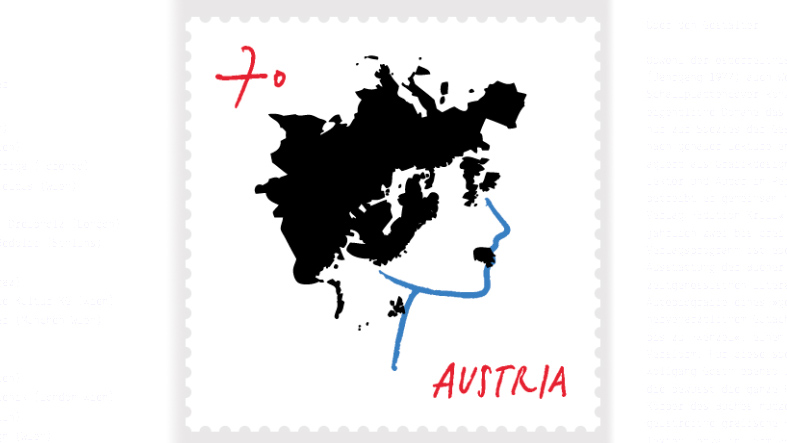This is a head whose form initially puzzles the viewer. But soon, a slight switch in the angle at which the image is viewed reveals the high-heeled boot of Italy and, then, the silhouette of the continent of Europe. Does the head seek to represent the goddess Europa, gazing expectantly into the future? Small intervention, large room for interpretation: simple means are used as a means of contributing to the design of Europe or, figuratively, of “giving her a face”. In such a process there is no dominant way of thinking – and it is even possible to turn things on their head in order to allow a fresh and unimpeded view. In this sense, the design can be seen as a reference to the many European thinkers (and lateral thinkers) whom we must thank for everything from particle accelerators to philosophy and the fine arts – and whose “Mona Lisa”, “Faust” and “Magic Flute” are part of the identity of Europe.

Wolfgang Gosch (1977)
Although the Austrian designer Wolfgang Gosch also creates websites and record covers, he is truly at home in the world of books. Here, he operates as a combination of publisher, editor, proof-reader, author and, of course, graphic designer – of the sort who only turn their attention to questions of layout after having addressed the material in detail. Since 2008 he has managed, together with Virgil Guggenberger, the Vienna publishing house “Edition Krill”, bringing out two or three books a year. The company’s catalogue, which is as striking as the designs of their books, stretches from contemporary literary miniatures and the autobiography of a “born criminal” which includes neurological reports from the 19th century to “Wenzel”, a modern romance in verse form. For this special genre Wolfgang Gosch developed an equally special design approach which made very conscious use of the entire available surface and, at times, the body of the book. Within the covers he develops ingenious graphic commentaries on the individual texts in the form of illustrations, colourful decoration or elaborate arrangements of comments and footnotes. And, if nothing else, these details exemplify the intelligence and sensuality with which bibliophilic books can be designed in this day and age.